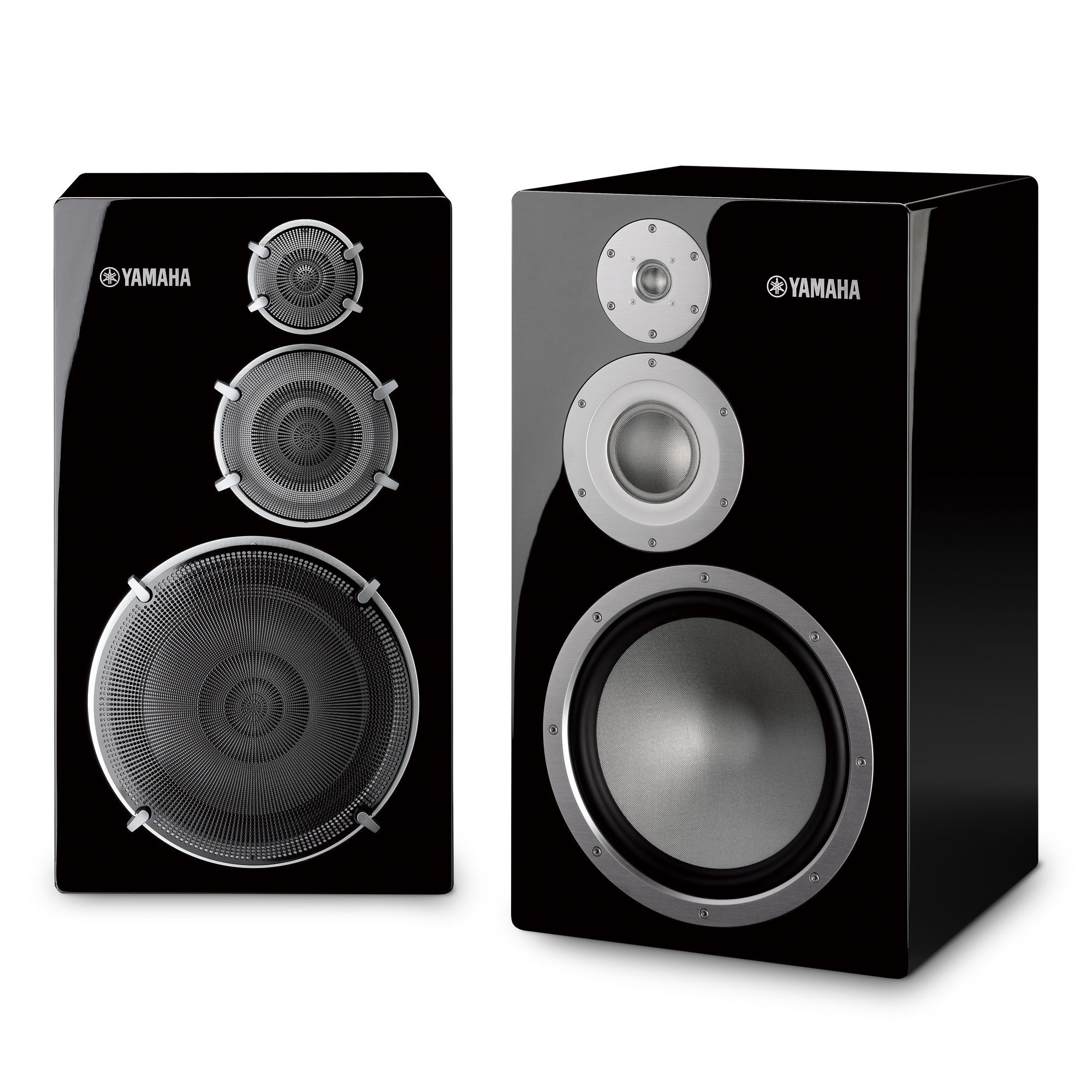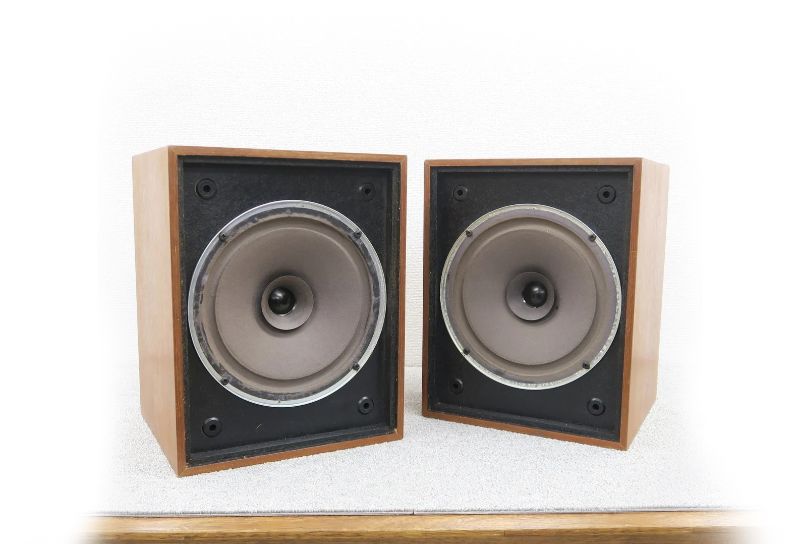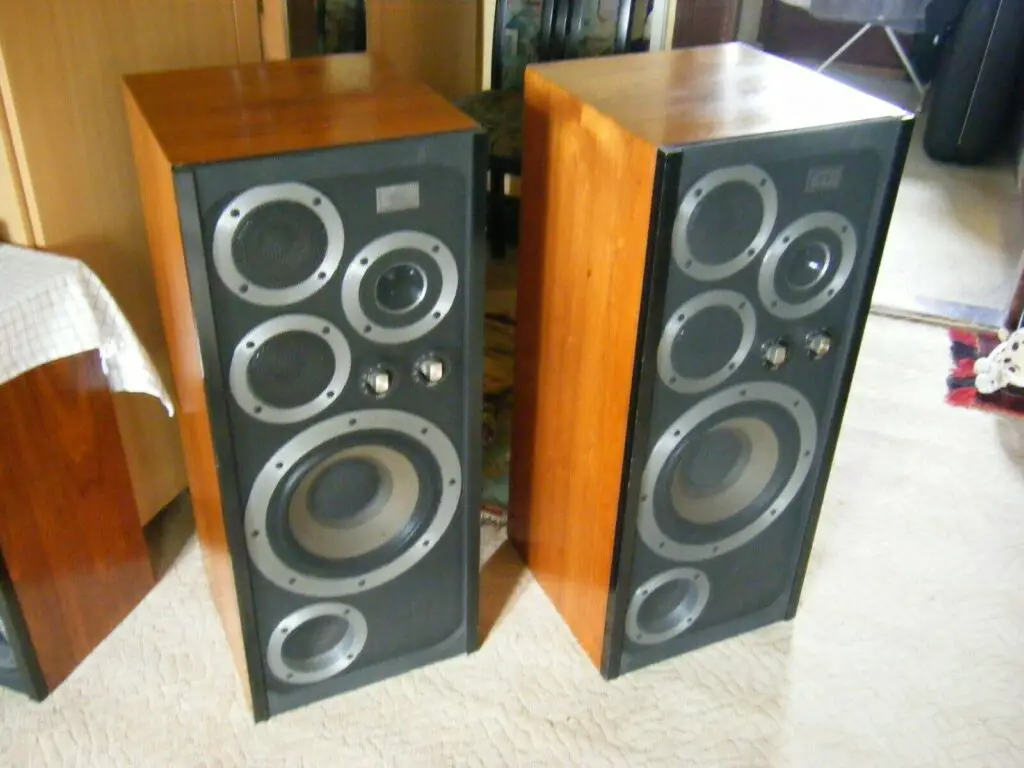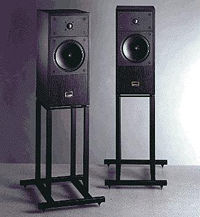If you’ve been paying attention over the last few decades, you’ve probably heard of Yamaha’s legendary NS-1000M loudspeaker, which was first released in 1978. It had an unforgettable sound, thanks to highly inventive Beryllium midrange and treble dome drivers that were a tenth of the weight of standard designs, housed in a super-thick sealed cabinet with a massive bass driver. It was a big coup for Yamaha, and it was quickly adopted by recording facilities all around the world.
Fast forward to 2017, and the business was back in the high-end loudspeaker market, with a product that looked almost identical to the original. Except, in fact, it isn’t. Despite a remarkable aesthetic likeness to its renowned predecessor, the NS-5000 cost £15,000 including stands and had no Beryllium drive units visible. Yamaha claims that the NS-1000physical M’s proportions – which are somewhat larger than the NS-1000M – and cabinet configuration are optimal for the purpose at hand.
The drivers are, in fact, completely different – but still fascinating. The dome tweeter, dome midband driver, and woofer are all made of Zylon. This is a synthetic fiber developed in Japan that is believed to be the strongest in the world. Yamaha’s unique monel alloy is then vapor-coated onto it. According to Yamaha, the material has an acoustic velocity that is very comparable to Beryllium, and as development advanced, engineers discovered that using it for the 30cm tweeter, 80mm mid, and 300mm woofer worked well.
The crossover points are set at 750Hz and 4.5kHz, with the goal of integrating the drivers smoothly to create the impression of a single full-range speaker – or, as the firm puts it, “a unified tone color.” Short signal paths are designed in, and the components themselves are very high quality types, including Mundorf MCap Supreme Evo capacitors and MResist Supreme attenuators. Crossover components are affixed to a double-sided printed circuit board with extra-thick 140 copper traces; short signal paths are designed in, and the components themselves are very high quality types, including Mundorf MCap Supreme Evo capacitors and MResist Supreme attenuators.
A specific acoustic absorber is installed within the 395x690x381mm, 35kg, 65 liter cabinet. According to Yamaha, standing waves inside the box were reduced using Finite Element Analysis and laser scanning. The laminated plywood enclosure is built of Japanese White Birch from the island of Hokkaido, and it features mitered joint construction with strengthening cross bracing within. The enclosure’s front baffle is 29.5mm thick, while the other five sides are 20mm thick. The enclosure’s six external surfaces feature a piano gloss lacquered piano finish, which was achieved using the same paint, priming, and polishing methods as Yamaha’s grand pianos. The fact that the NS-5000 has a bass reflex port instead of a sealed box design distinguishes it from the NS-1000M. Yamaha claims that it improves sensitivity and driving comfort. The frequency response is said to be 26Hz to 40kHz (-10dB), with a power handling of 600W. The sensitivity is reported to be 88dB/1w/1m, with a nominal impedance of 6 ohms that drops to 3.5 ohms at its lowest point.
The big news is that the Yamaha NS-5000 doesn’t sound like its legendary forerunner. There is a family resemblance, although it isn’t particularly strong. Yes, there’s a tight, dry, clean demeanor to it, with a lot of attention to detail and a big, muscular presence. I really adored the beautifully seamless drive unit integration, which is truly unique. It sounds like one gigantic full range driver and sounds ‘all-of-a-piece’ in a way that nearly no other moving coil speaker does.
This is accompanied with a big, expansive sound that is rich in detail. Everything does seem to blend into the midband, which has a lot of insight. The bass is powerful, gutsy, and taut, while the treble is silky smooth and extended, with a lot of refinement. This loudspeaker’s calmness is remarkable; even at extremely high sound levels, it remains unflappable. It’s this kind of grace under duress that reveals its origins and cost. But it’s more than a ‘huge banger,’ and it really sounds less forceful than its appearance suggests. The speaker’s naturally detailed demeanor, combined with a keen sense of time, results in a lively, zippy sound.
The clearest defining trait of this superb loudspeaker, aside from its seamlessness, is its soundstaging. Images are hurled into the space in a forceful and precise manner; they’re precisely set within the recorded acoustic, which comes across as unusually vast. The NS-5000 may also hang images behind or in front of the plane of the loudspeakers, allowing for outstanding depth perspective. The Yamaha excels at recording, and turning up the volume significantly increases the size of the recorded acoustic. You quickly realize that the NS-5000 is capable of operating in huge rooms at high volumes in a way that virtually all other loudspeakers could only dream of. The way it reproduces music has a beautiful sense of linearity, firmness, and stability – a ‘architectural’ feel to it. Everything is methodically interconnected, but the musical intricacies are allowed to thrive within the overall structure.
I did notice a minor relaxation of the tone when compared to its forerunner’s infinite baffle cabinet. The bass guitar tones are slightly more rounded, and the woodwork has a subtle ‘thrum’. A reflex ported design gives the impression that bass tones aren’t exactly synchronized with what’s happening on higher up the frequency range. Despite this flaw, the Yamaha NS-5000 is a very powerful and assured sounding loudspeaker with outstanding delicacy and smoothness, and it is unquestionably enjoyable to listen to. It produces an extremely clean and clear sound across all genres of music, without ever sounding excessively analytical. Only, don’t expect it to be a reincarnation of the NS-1000M — there are some parallels, but this is very much its own man.







